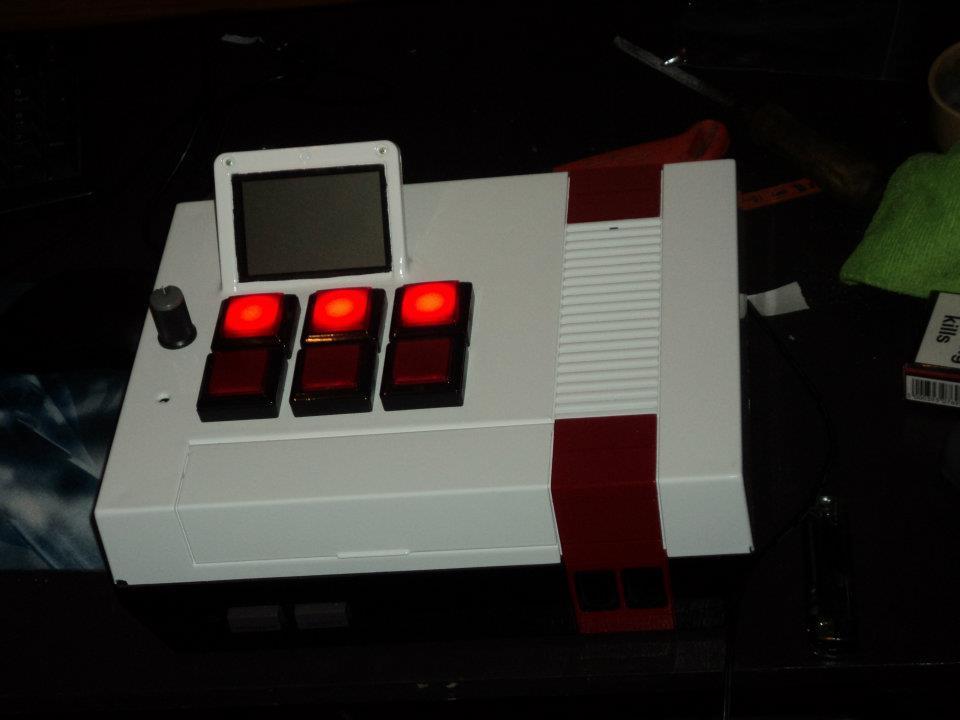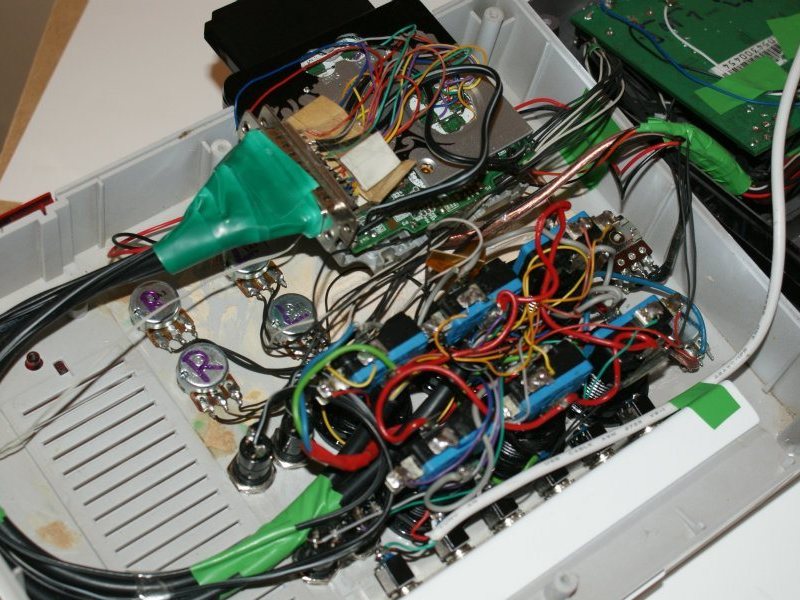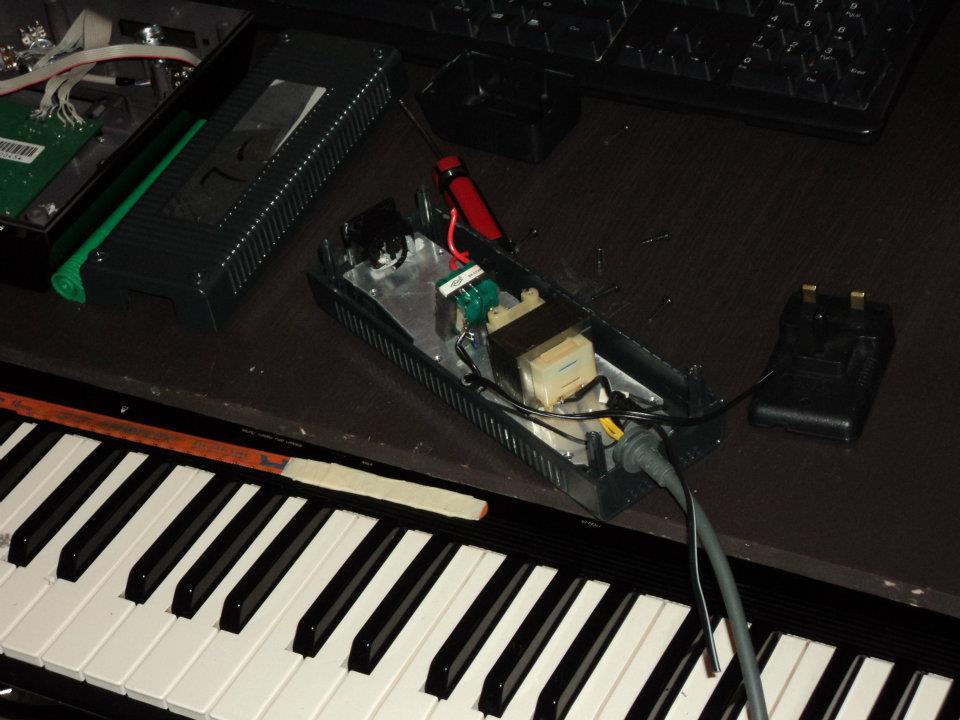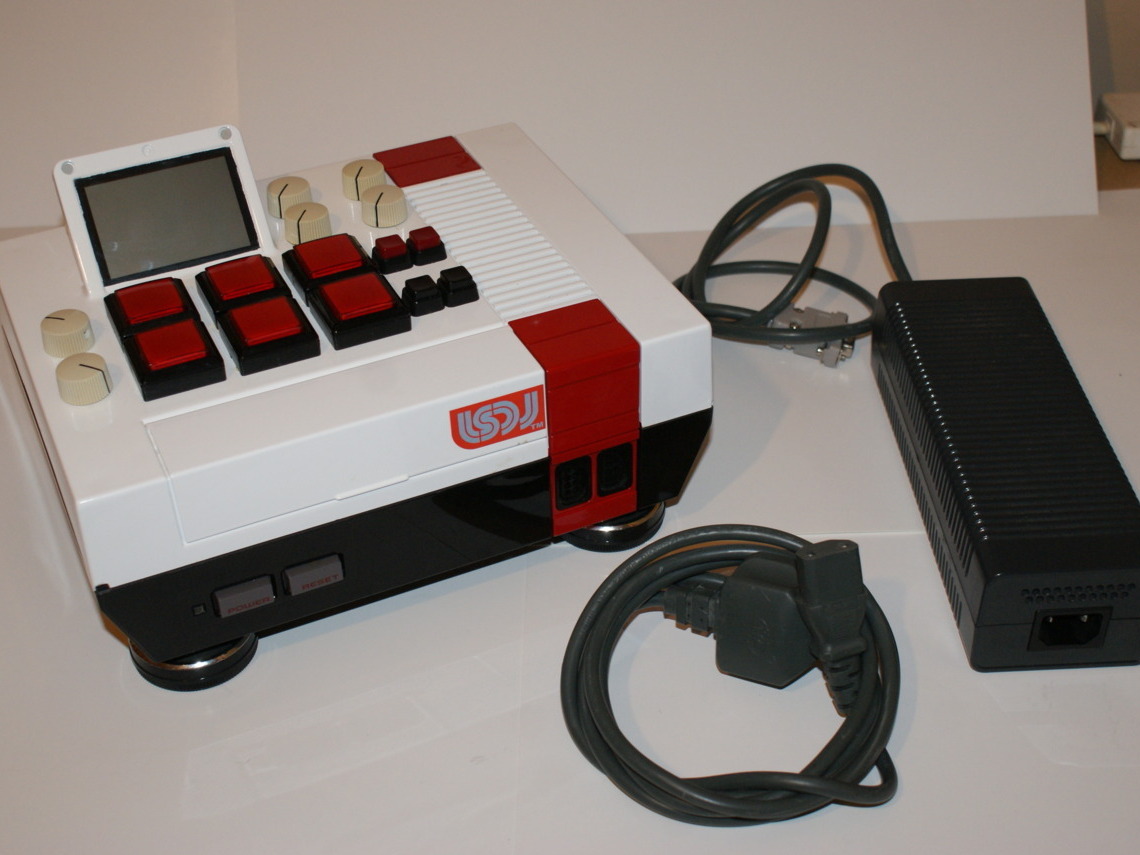Projects from Make: Magazine
The NES MPS – A Stage-Worthy LSDJ/Nanoloop Workstation
The NES MPS is basically a GBA SP and a 16bit FX processor housed in an NES shell. The aim is to create a stage-worthy and tactile interface to run LSDJ or Nanoloop.

The NES MPS is basically a GBA SP and a 16bit FX processor housed in an NES shell. The aim is to create a stage-worthy and tactile interface to run LSDJ or Nanoloop.


An idea is born.
I was trying to come up with a cool new project idea one night when I stumbled across a broken NES and a GBA SP. The idea quickly sprang to mind to house the Game Boy inside the NES shell somehow. After placing the screen I noticed how much it looked like an MPC and decided to use square buttons to really give it the MPC look.
I decided to incorporate an old Alesis PicoVerb that I had lying around into the project to give it some more functionality. (On the next one I plan to add an analogue LP filter.)
After I settled on the design I began to order the parts and start the fabrication process.

I started with the screen placement. After I decided where to put it I cut a rectangular hole and laid the screen in it. I then scuffed up the area where the screen meets the NES and applied body filler all around the gap. I then sanded it to a nice smooth curve all the way around.
The only thing I don’t like about this mounting method is the fact you can’t remove the screen; something I’m definitely going to change in the next design.
After the screen was mounted and the hole at the back was cut and I sent it off to be painted. This was done in a professional spray booth but the same effect can be achieved with something like Krylon Fusion.

After paint, I began to mount the switches and pots. I like to figure out where the controls are going first so then later I know how long the wires must be.

Now for the tricky part: Soldering all the control wires and audio wires to the Game Boy circuitry. This was a rather time-consuming task and after two failed attempts I tried one final time and even added a 25 pin D-sub connector so the GBA can easily be disconnected from the rest of the device.

Mounting the hardware and PCB was pretty easy. The 1/4″ jacks were soldered directly to the board of the PicoVerb and supported the PCB fine. After installing the RCA outputs I got a piece of metal machined out to hold a D-sub connector where the original power jack was situated.
The GameBoy is attached to a wooden bracket which is then fixed to the shell with 2 screws.

For power I decided to gut an old Xbox power brick and install the 3 transformers I needed. These were to supply 3 rails out of the one cable. The rail voltages needed were 12V DC (for the lights) 9V AC (for the PicoVerb) and 5.2V DC (for the Game Boy).

One of the last things I had to do was make use of the cartridge slot on the NES. I decided to get a metal plate machined out and mount the power switches on it under the hood. Two of these switches let you select whether the GBA signal goes to the PicoVerb or straight out of the dedicated RCA outputs. The remaining 4 switches are for the PicoVerb power, the LED power and 2 that I have left unconnected for the next owner to do what they wish with (yes, it is for sale!).
The power and reset switch on the NES are the GBAs power and backlight.

That’s it, really; this was a very brief tutorial as this is just a prototype. This particular unit is for sale on eBay at the moment (just search NES MPS) and with the money I get for it I’m going to build a couple more so I can create a full step-by-step video tutorial. I am also planning to build a MIDI interface in the next one to add some more flexibility when used in the studio or on stage.
For now, check out my blog for build processes and updates!
Thanks for reading. I hope you enjoyed the guide and are interested in building your own unit. Now, go make something!